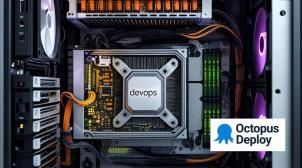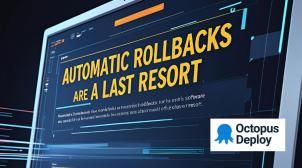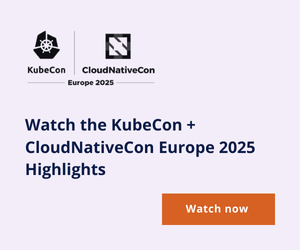-
Troubleshooting Kubernetes with AI: Using the K8s MCP server
Unlock AI-powered Kubernetes troubleshooting! Discover the Model Context Protocol (MCP) and how it standardizes AI agent interactions with Kubernetes tools like kubectl, Helm, and ArgoCD. Learn how to integrate K8s MCP Server with agentic frameworks like PydanticAI for seamless, context-rich cluster management.
-
DevOps and Platform Engineering
DevOps brought developers and operations together to improve software delivery speed and reliability. Now, Platform Engineering builds on that foundation—enabling development teams with self-service tools, golden pathways, and smoother workflows. This article explores how Platform Engineering complements DevOps, supports scale without sacrificing autonomy, and helps high-performing teams reduce complexity while boosting productivity.
-
Why Policy as Code is a Game Changer for Platform Engineer
Platform engineers, revolutionize your game! Discover why Policy as Code (PaC) is the ultimate game-changer for building scalable, secure, and efficient internal developer platforms. Learn how PaC empowers developers with faster feedback, ensures secure self-service, automates governance, and fortifies your security posture effortlessly.
-
Automatic Rollbacks are a Last Resort
Automatic rollbacks might sound like a safe fallback for failed deployments, but modern software delivery tells a different story. This article explores why human-driven resilience, Continuous Delivery, and progressive delivery strategies are far more effective. Learn how deploying in small batches, using canary or blue/green strategies, and leveraging feature flags can help you respond smarter—and faster—when things go wrong.
-
10 Reasons Why Kubernetes Users Choose Kyverno Over OPA/Gatekeeper
Tired of complex Kubernetes policy enforcement? Discover 10 compelling reasons why Kyverno, the Kubernetes-native alternative, is outperforming OPA/Gatekeeper. Learn how its simplified YAML policies, powerful mutation, and built-in generation capabilities empower DevOps for effortless security and compliance.
-
CloudBolt x StormForge: Why Automated FinOps Beats Human Effort
CloudBolt CTO Kyle Campos discusses ending FinOps dashboard overload with action-driven orchestration and how StormForge enhances Kubernetes optimization through real-time automation and smarter remediation.
-
Beyond Traditional AppSec: Navigating the New Frontier of AI Security with Mend AI
Bar-El Tayouri of Mend AI shares why securing AI-driven apps demands new strategie and how to build an effective, future-ready AppSec program.
-
Achieving Sovereign AI with the JFrog Platform and NVIDIA Enterprise AI Factory
Unlock Sovereign AI! Discover how the powerful collaboration between JFrog and NVIDIA delivers secure, scalable, and compliant AI. Learn how they enable enterprises to build, manage, and deploy AI models from development to edge, ensuring full control over data, models, and infrastructure.
-
How JFrog Delivers Self-Service Cloud Environments for our Developers
Increasing operational efficiency, automation, and scalability are critical for success In today’s cloud-native development environments
-
Top 15 Kubectl plugins for security engineers in 2025
Kubernetes security is evolving fast—and so should your tools. This roundup of the top kubectl plugins for 2025 spotlights essential extensions that help security teams audit RBAC, trace runtime activity, manage secrets securely, and respond to threats in real time. Whether you're managing complex clusters or chasing compliance, these plugins supercharge your command line with the visibility and control you need.
-
Runtime is the real defense, not just posture
Traditional cloud security tools focus on static scans and misconfiguration checks, but they can’t keep up with today’s fast-moving threats. This article explores why runtime security — real-time monitoring and automated response — is essential for protecting dynamic cloud-native environments. Learn how shifting to a runtime-first strategy enables faster detection, proactive defense, and true resilience in the cloud.
-
Practical AI security in multi-cloud environments
As organizations rapidly adopt generative and agentic AI tools across multi-cloud environments, securing those systems has never been more critical. This article explores the key challenges of AI security—such as visibility gaps, runtime threats, and compliance pressures—and outlines best practices for building a strong AI security posture. From continuous monitoring with Falco to managing AI-specific risks with frameworks like MITRE ATLAS and OWASP AI, learn how to protect your AI infrastructure against evolving threats and regulatory demands.
Filter & Sort



















